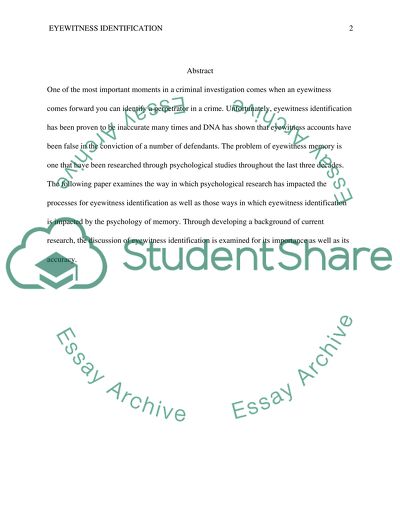Cite this document
(“Eyewitness Testimony Research Paper Example | Topics and Well Written Essays - 1750 words”, n.d.)
Retrieved from https://studentshare.org/psychology/1654633-eyewitness-testimony
Retrieved from https://studentshare.org/psychology/1654633-eyewitness-testimony
(Eyewitness Testimony Research Paper Example | Topics and Well Written Essays - 1750 Words)
https://studentshare.org/psychology/1654633-eyewitness-testimony.
https://studentshare.org/psychology/1654633-eyewitness-testimony.
“Eyewitness Testimony Research Paper Example | Topics and Well Written Essays - 1750 Words”, n.d. https://studentshare.org/psychology/1654633-eyewitness-testimony.


